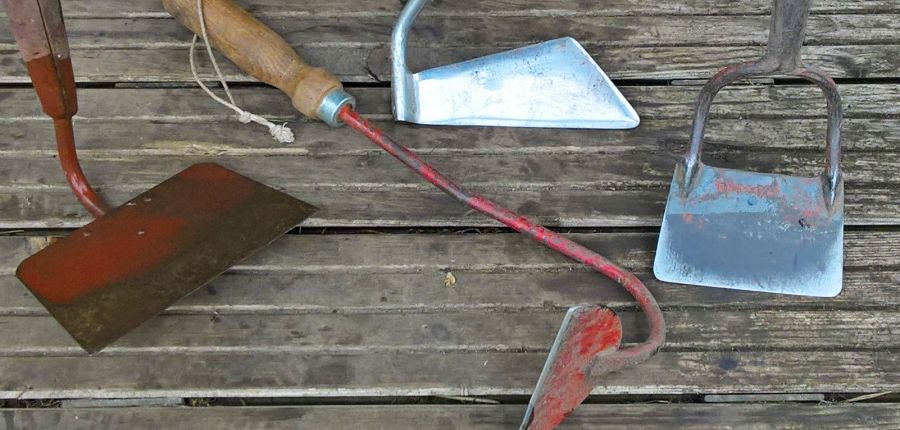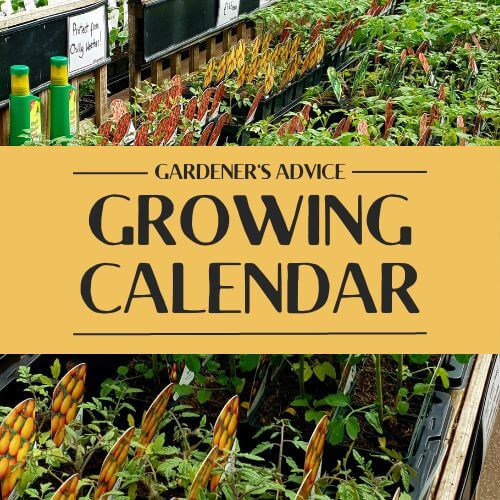Keep that hoe moving! - Weed Control
Posted By: rocket veg Category: Pests and Diseases, Seasonal AdviceSuccessful vegetable growing relies on the rhythm and cycle of gardening and much of what goes on in the veg patch is about repetitive actions which get things done at the right time in order to produce great crops. Now is the time of year, especially after some heavy and much-needed rain (hooray!), when weeds seem to pop from the ground and all manner of pests are lying in wait to nibble tasty leaves and make off with your precious berries. Weeding and pest control are two essential but unexciting aspects of gardening which never go away, a bit the doing the housework.
Weeding and hoeing
Today will be a ‘ho-hum’ day on my allotment, dealing with ‘weedlings’ before they get too big for their boots. Unless you want your precious crops to be swamped and vital nutrients sucked from the soil by weeds, now is the time to tackle the invasion – and what better tool to choose than a hoe.
If need be, I’ll get down on all fours to remove weeds from my salad bed and find that an old table fork with short tines is perfect for easing out weeds growing close to the base of a plant. Vegetable plants growing in nice straight rows can be kept clear of weeds by regular use of a hoe – a must-have tool for anyone serious about running an allotment or back garden veg patch. Like all good tools, the hoe has been developed for a specific purpose and the basic design has remained unchanged for hundreds, if not thousands, of years.
Types of hoe and how they work
I’m a big fan of hoes and have several, each designed for a slightly different purpose, including heavier types of hoe used for digging.
Hoes intended for weeding fall into two main groups –‘Dutch’ and ‘draw’. Dutch hoes generally have a flat metal blade attached to a long pole handle and work by pushing and pulling action to cut through weeds just below the surface. To work effectively, the blade of a Dutch hoe should be kept reasonably sharp. As their name suggests, draw hoes work by dragging the weeds from the ground, at the same time pulling soil into a neat ridge – perfect when earthing up potatoes and removing weeds at the same time.
I use my draw hoe quite a bit, but my favourites are an elegant Dutch hoe which belonged to my grandfather and a short-handled draw hoe - a nifty little implement with a crooked neck and short blade on a short handle, specially designed to weed around onions and the like. I picked it up for a pound from a street market stall and it’s more than earned its keep over the years.
I also have a modern variation of a Dutch hoe which looks like a long-handled golfer’s putting iron. It was given to me by a friend is ideal for hoeing behind plants which are out of easy reach.
My Japanese hoe with its short, curved blade is perfect for putting paid to weeds by nicking through their stems just below the surface of the soil, but this involves bending or kneeling, a back-breaking task, satisfying when done, but one of those ‘grin and bear it’ allotment jobs.
When weeding larger areas, I find it much easier to stand and wield a long-handled hoe which has the advantage of being able to reach along the rows between plants.
How to use a hoe for weeding
Hoeing can be a surprisingly relaxing way of doing what is essentially a gardening chore. Choose a dry, sunny day and set to work, pushing and pulling the hoe back and forth so that the blade slides under the soil close to where the leafy growth of the weeds appears from their roots. If the blade of the hoe is sharp enough, it will make a clean cut through stems of larger weed, exposing the fleshy top of the root for the sun to burn. Smaller weeds will simply be dragged up, roots and all, by the blade. Take your time, or a casual swing of the hoe will sever the stem of a plant instead of a weed - easily done and very disheartening.
Once you’ve cut the weeds off, simply leave the remains to wither and die in the sun. I am a tidy gardener and cannot bear the sight of weed remains littering the soil between my neat rows of veg, so I find it hard to resist the temptation to tidy up. I’m trying to remind myself that it is far better to leave the old weeds to act as a mulch. Like all garden tasks, the best bit is standing back afterwards and admiring your efforts.
Dealing with pesky pests
I’ve written before with advice about covering certain crops with net or mesh to deter birds and various insects such as cabbage whitefly and carrot root fly. If you are considering building a simple structure to support netting or mesh, take a look at other plots near yours for ideas. Allotment gardeners can be endlessly resourceful when the need arises and great at putting all manner of discarded items to good use. Green mesh, once used on the side of scaffolding to protect passers-by from falling debris, makes great protective covering as well as an excellent wind break.
Top tip for deterring birds
Old CDs, tied to lengths of string and hung from canes pushed into the ground, create a pattern of light on the surrounding area as the sun catches and reflects off them. Birds – pigeons in particular – are confused by this, preferring easier pickings such as your neighbour’s young and tender cabbages!
For more pest control advice see - https://riversidegardencentre.com/blog/how-to-deal-with-pests







